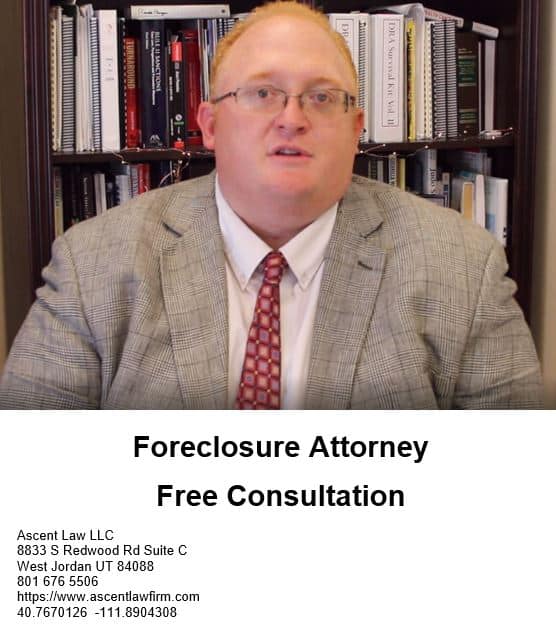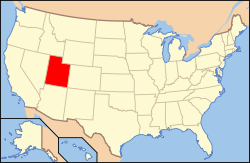

By now the whole world has heard the story of the problems in the subprime mortgage market, which began to show up in the United States in 2007 and then spread to other countries. Home prices and homeownership had been booming since the late 1990s, and investing in a house had seemed a sure route to financial security and even wealth. Homeownership, for all its advantages, is not the ideal housing arrangement for all people in all circumstances. And we are now coming to appreciate the reality of this, for the homeownership rate has been falling in the United States since 2005.
What was the chain of events in the subprime crisis? Overly aggressive mortgage lenders, compliant appraisers, and complacent borrowers proliferated to feed the housing boom. Mortgage originators, who planned to sell off the mortgages to securitizers, stopped worrying about repayment risk. They typically made only perfunctory efforts to assess borrowers’ ability to repay their loans—often failing to verify borrowers’ income with the Internal Revenue Service, even if they possessed signed authorization forms permitting them to do so. Sometimes these lenders enticed the naïve, with poor credit histories, to borrow in the ballooning subprime mortgage market. These mortgages were packaged, sold, and resold in sophisticated but arcane ways to investors around the world, setting the stage for a crisis of truly global proportions. The housing bubble, combined with the incentive system implicit in the securitization process, amplified moral hazard, further emboldening some of the worst actors among mortgage lenders.
When mortgage rates begin to reset to higher levels after initial “teaser” periods ended, borrowers, particularly subprime borrowers, begin defaulting, often owing more than their homes were worth or unable to support their higher monthly payments with current incomes. If you are facing foreclosure, speak to an experienced Riverton Utah foreclosure lawyer. The lawyer can advise you on how you can save your home from foreclosure.
The term “subprime” has no distinct or universal definition. The Oxford English Dictionary explains that the concept historically referred to loans having preferential terms, but this is no longer the case. Subprime is now understood to reflect the credit status of the borrower (e.g., credit challenged), the conditions of the loan (e.g., higher interest rates and fees), or the characteristics of the lender (e.g., institutions which specialize in subprime loans). Lending institutions have their own determination of what borrower and loan characteristics qualify the parties and/or transaction as “subprime” based on how the transaction fits into their own portfolios or the portfolios of their secondary-market buyers and investors. For purposes of this study the term subprime should be considered within the context of the present setting – for example, referring to high-risk borrowers, loans, or lenders.
Three particular legislative actions have been credited with stimulating the birth of the subprime industry. These federal statutes included the Depository Institutions Deregulation and Money Control Act of 1980 (DIDMCA), the Alternative Mortgage Transaction Parity Act of 1982, and the Tax Reform Act of 1986. Taken in combination, these events essentially created the subprime business as it enabled lenders to begin charging higher interest rates and fees (exceeding state limits), to offer adjustable interest rate mortgages (ARMs) and balloon payment options, and allowed individuals to begin taking home mortgage interest tax deductions. Although other changes preceded these Acts in the late 1960s through the 1970s, such as the Fair Housing Act of 1968, Equal Credit Opportunity Act of 1974, Home Mortgage Disclosure Act of 1975, and the Community Reinvestment Act of 1977, Bitner notes it was not until the enactment of the DIDMCA that the business of subprime lending became a “legal” enterprise.
In addition to the legislative activity that positioned previously or otherwise under-qualified or credit-challenged borrowers to enter into exchange relationships with lenders, market changes also “contributed to the growth and maturation of subprime loans”. Brokerage and securitization were key elements in this growth (and in the industry’s segmentation), as it gave traditional and non-traditional (non-depository) lenders the ability to supply and deliver creative financing and credit, while simultaneously passing on its accompanying risk.
Fraud comes in many forms and has been credited with playing a substantial role in the downfall of the subprime mortgage market over the past decade. Mortgage fraud is a material misstatement, misrepresentation, or omission relied on by an underwriter or lender to fund, purchase, or insure a loan. This type of fraud is usually defined as loan origination fraud. Mortgage fraud also includes schemes targeting consumers, such as foreclosure
rescue, short sale, and loan modification.
Subprime mortgage innovation provided perceived improvements over traditional lending in that it: (1) increased economic profitability; (2) provided an avenue by which historically unqualified parties could qualify for home loans; (3) opened up new employment opportunities for mortgage and real estate practitioners; and, (4) enabled the creation of numerous alternative loan structures that were convenient and relatively easy to use.
First, subprime lending increased economic profitability. The innovation created opportunities for every facet of the mortgage food chain to benefit financially in terms of property or profit. In contrast to traditional loans, home buyers could now obtain property with little to no money down, home owners could use the equity in their property to cash-out and pay off higher interest debt, to purchase other desirable assets (e.g., car, boats), or to use the funds in any way they saw fit (e.g., vacations). Conventional and non-depository lenders could offer a wider variety of loan structure options, while allowing them to pass on the risk associated with these products out of their own portfolios and into the secondary market. In turn, they would benefit from the origination premiums and servicing fees of the subprime notes. And finally, the secondary market, including the investors, GSEs, rating agencies, financial institutions, and investment managers (e.g., hedge or pension funds) were provided with increased revenue alternatives that many perceived as having unlimited potential.
Subprime lending was relatively advantageous as compared to traditional lending as it provided an avenue by which historically unqualified buyers could now qualify for home loans. This created new opportunities for individuals who would not have normally been involved in mortgage transactions to benefit from their existence in terms of homeownership, and also increased opportunities for homeowners to take advantage of the refinance and cash-out options with fraudulent loan applications through the low/no document, stated income type products. The reduced credit and documentation restrictions and relaxed regulations of subprime lending enabled the creation of numerous alternative loan structures that were convenient and relatively easy to use.
In addition to the federal laws and regulations that offer some protection against predatory lending practices, state law—consisting of both common law (judge-made law) and state statutes—may provide a basis for challenging abusive practices. The state law claims made most often in predatory lending cases are based on common law fraud and state consumer protection statutes that prohibit unfair or deceptive trade practices. Each of these causes of action can be useful, but each has drawbacks and limitations.
Borrowers victimized by predatory lending practices often are victims of fraudulent misrepresentation, which long has been prohibited by state common law. Common law prohibitions against fraud in many instances are broad enough to cover predatory lending practices. A borrower who is successful in a fraud suit may recover compensatory damages and, in most states, punitive damages. The availability of punitive damages is particularly important where the actual damages resulting from the lender’s illegal conduct are relatively small; in such a situation an order limited to reimbursement will have no deterrent effect.
Fraud claims, however, are surprisingly difficult to win. Federal courts and many state courts require that allegations of fraud contain greater detail than allegations in a typical lawsuit. A plaintiff in a fraud case is commonly required to prove his or her case by “clear and convincing evidence,” rather than the customary “preponderance of the evidence” standard applicable in most civil cases. And many of the specific elements of fraud are particularly difficult to show. For example, a fraud claim requires a plaintiff to prove that the lender intentionally deceived him or her, and that he or she reasonably relied on the intentional misrepresentation. The need to prove individual reliance, in particular, may make it very difficult as a practical matter to bring a class action.
Even when they are successful, plaintiffs in fraud cases generally cannot recover attorneys’ fees. This fact, coupled with the general difficulty of proving fraud, creates a strong disincentive for private attorneys to bring fraud claims on behalf of individuals who do not have the means to pay an attorney and are also most likely to be the victims of predatory lending.
A second state law option for combating abusive lending practices rests with the many state statutes prohibiting unfair or deceptive trade practices. All 50 states and the District of Columbia have enacted statutes to prevent consumer deception and abuse. These statutes (known generally as “UDAP laws” because they prohibit unfair and deceptive acts and practices) tend to be both broad and flexible enough to cover a wide range of abusive practices.
State UDAP laws are generally enforced through state-initiated actions, but frequently include provisions for a private right of action by consumers. In a state enforcement action, state officials may seek an order preventing a company from engaging in illegal practices, and in most states may seek civil or criminal penalties, as well as restitution for injured consumers.68 In states that offer a private right of action, this need not prevent an individual borrower from suing a lender directly.
In general, state UDAP laws offer a variety of useful remedies to borrowers who file a private suit. Courts may order injunctive relief (i.e., an order that a company cease illegal practices), actual damages, and treble or other multiple damages (actual damages multiplied by three or some other factor). A minority of statutes explicitly authorize punitive damages. Most state UDAP laws also permit prevailing plaintiffs to recover attorneys’ fees.
Claims based on state UDAP laws are generally easier to prove than common law fraud claims because the standards that define the “deceptive,” “unfair,” “unconscionable,” “misleading” or “fraudulent” practices prohibited under these statutes are typically less stringent than the requirements of common law fraud. In most states, for example, a consumer need not prove an intent to deceive, actual deception, or reliance on a misrepresentation. The standard of proof is generally the typical “preponderance of the evidence” rather than “clear and convincing evidence.”
Although helpful, UDAP laws are not the answer to predatory lending. These laws vary by state, providing borrowers in some jurisdictions with a lower level of protection against predatory practices, or fewer remedies, than borrowers in other states. Some state UDAP laws offer little to no protection against predatory lending, due to specific exemptions for credit transactions, real estate transactions, financial institutions, or banks, or as a result of preemption by federal laws regulating credit transactions. Other UDAP laws may require consumers to file a complaint with a state agency before a state enforcement action can be initiated, and most lack provisions for punitive damages, significantly diminishing the impact these laws may have on a lender.
In short, state causes of action based on either common law fraud or UDAP laws are useful additions to available federal causes of action, but standing alone will not provide Mary with the protection she needs when confronted with the abuses of a lender like Acme. UDAP coverage is too uneven and unpredictable from state to state, and a fraud claim may well set too high a legal bar for an individual victim lacking experienced legal counsel. Clearly, neither is a proper substitute for comprehensive federal anti-predatory lending legislation.
Those victimized by predatory lending are primarily persons who already own their homes, although a certain portion of this nefarious activity is foisted upon renters desiring home ownership. And in this regard, we need to question the (bipartisan) push to have everyone attain “the American dream”—a political, advertising, and cultural campaign that unfortunately causes grief for all too many households. While the nation’s home ownership rate has been rising, so has the foreclosure rate—primarily, of course, for low-income households.
If you have defaulted on your mortgage payments and are facing foreclosure, speak to an experienced Riverton Utah foreclosure lawyer. You may be a victim of predatory lending or mortgage fraud and you may be able to fight foreclosure.
Riverton Utah Foreclosure Attorney Free Consultation
When you need legal help with a foreclosure in Riverton Utah, please call Ascent Law LLC for your free consultation (801) 676-5506. We want to help you.
8833 S. Redwood Road, Suite C
West Jordan, Utah
84088 United States
Telephone: (801) 676-5506
Recent Posts
Accounting Basics For Businesses
Ascent Law LLC St. George Utah Office
Ascent Law LLC Ogden Utah Office
Riverton, Utah
Coordinates:
• MayorTrent Staggs • City CouncilSheldon Stewart, Troy McDougal, Tawnee McCay, Tish Buroker, Claude Wells • City ManagerDavid R. BrickeyArea
• Total12.58 sq mi (32.59 km2) • Land12.58 sq mi (32.59 km2) • Water0.00 sq mi (0.00 km2) 0%Elevation
4,439 ft (1,353 m)Population
• Total45,285 • Density3,600/sq mi (1,400/km2)Time zoneUTC−7 (MST) • Summer (DST)UTC−6 (MDT)ZIP code
Area code(s)385, 801FIPS code49-64340[2]GNIS feature ID1431862[3]Websitehttp://rivertonutah.gov
Riverton is a city in Salt Lake County, Utah, United States. It is part of the Salt Lake City, Utah Metropolitan Statistical Area. The population was 45,285 as of the 2020 census.[4] Riverton is located in the rapidly growing southwestern corner of the Salt Lake Valley.[5]
[geocentric_weather id=”6c027265-f7e8-4373-93b2-45570a0d47eb”]
[geocentric_about id=”6c027265-f7e8-4373-93b2-45570a0d47eb”]
[geocentric_neighborhoods id=”6c027265-f7e8-4373-93b2-45570a0d47eb”]
[geocentric_thingstodo id=”6c027265-f7e8-4373-93b2-45570a0d47eb”]
[geocentric_busstops id=”6c027265-f7e8-4373-93b2-45570a0d47eb”]
[geocentric_mapembed id=”6c027265-f7e8-4373-93b2-45570a0d47eb”]
[geocentric_drivingdirections id=”6c027265-f7e8-4373-93b2-45570a0d47eb”]
[geocentric_reviews id=”6c027265-f7e8-4373-93b2-45570a0d47eb”]





